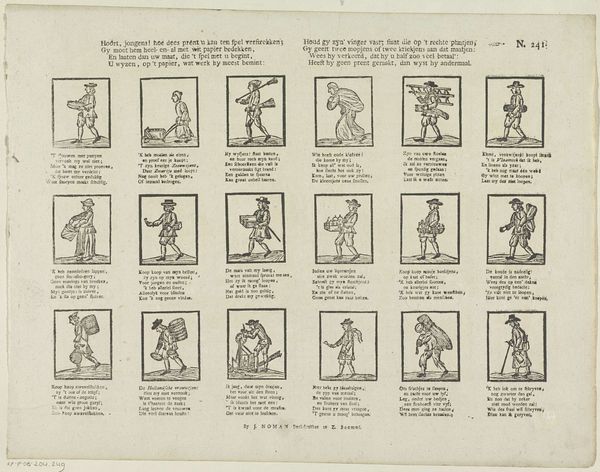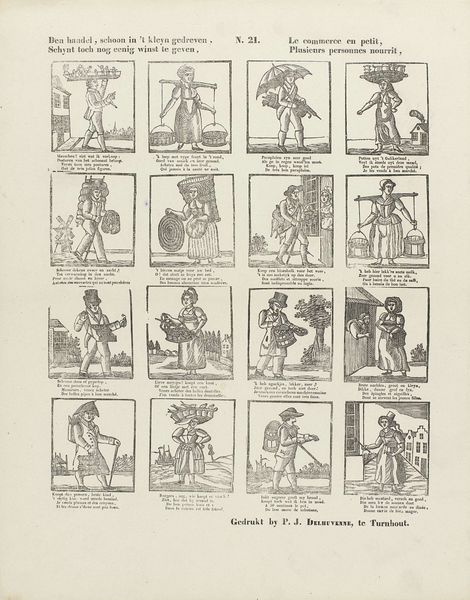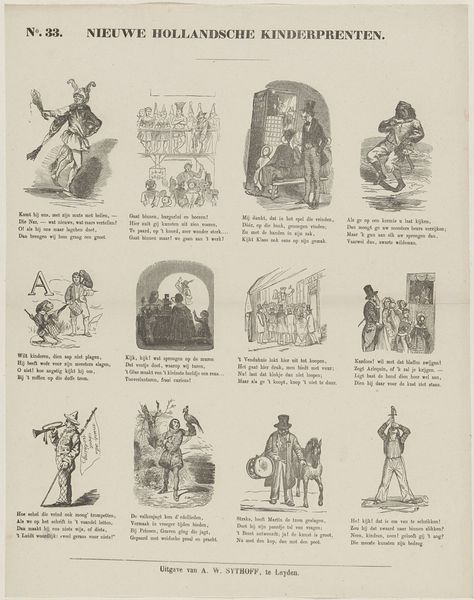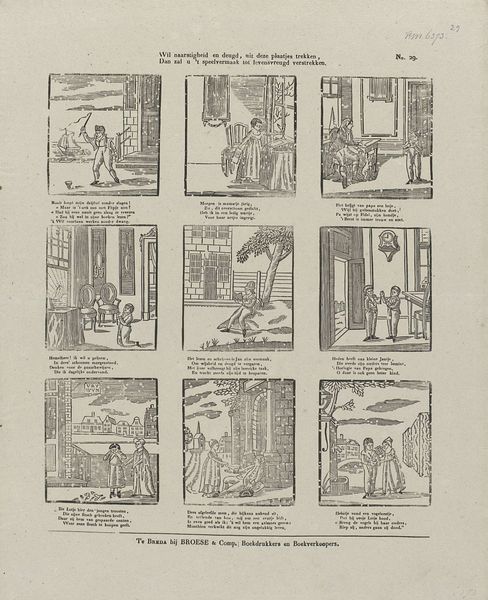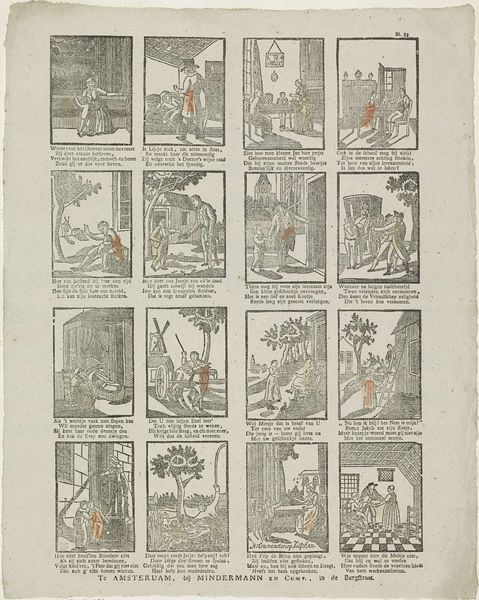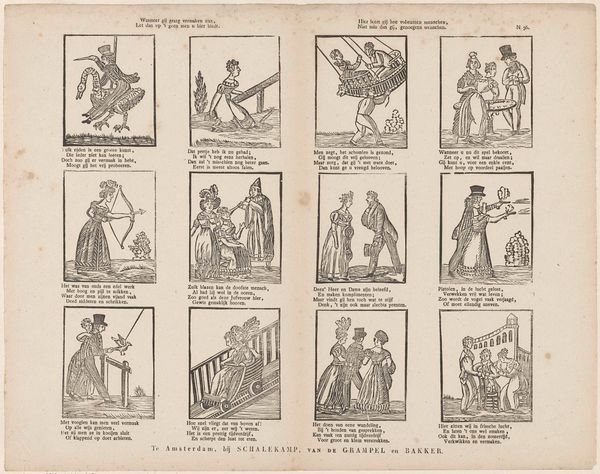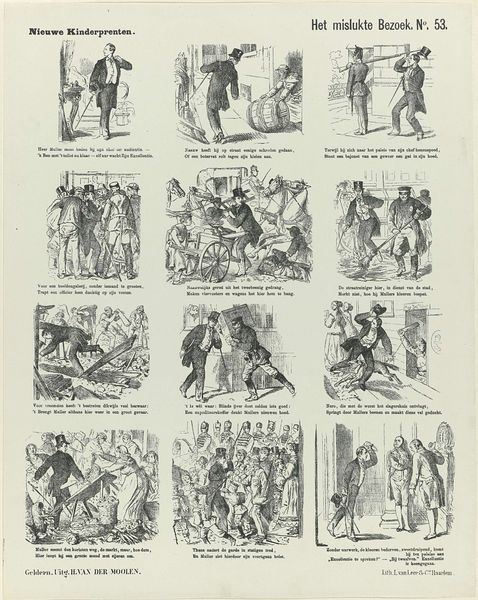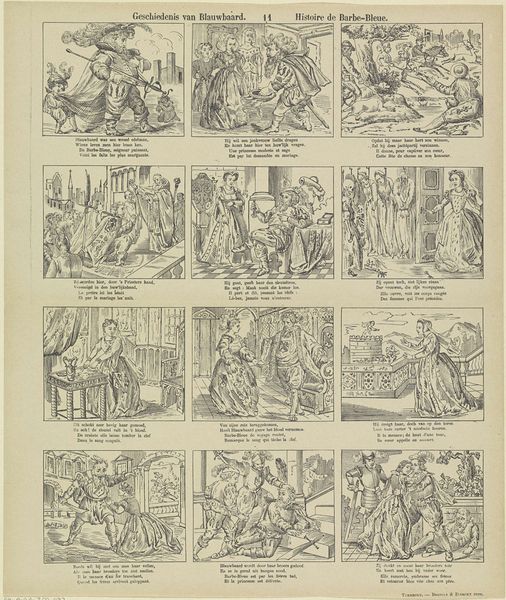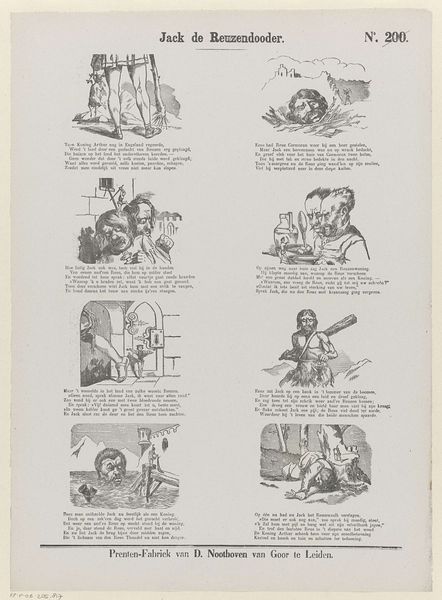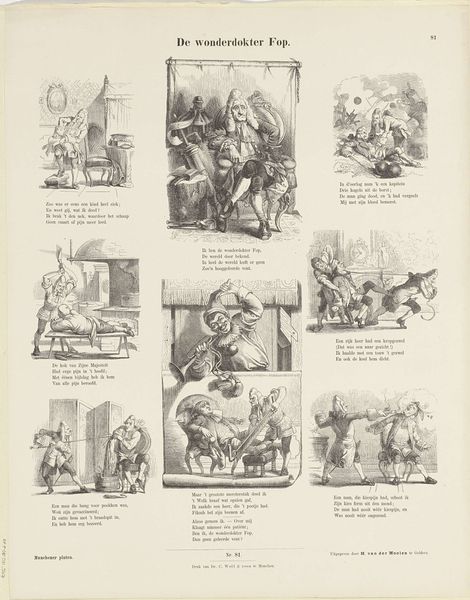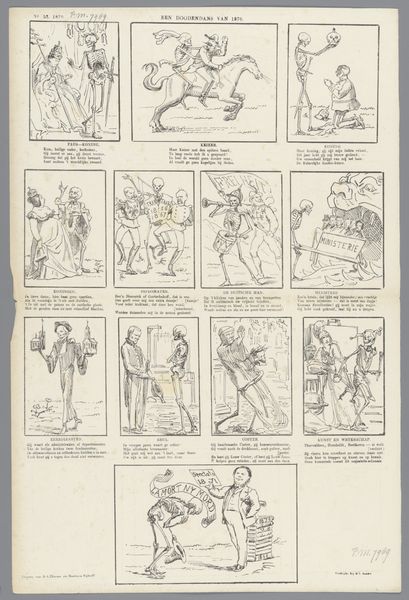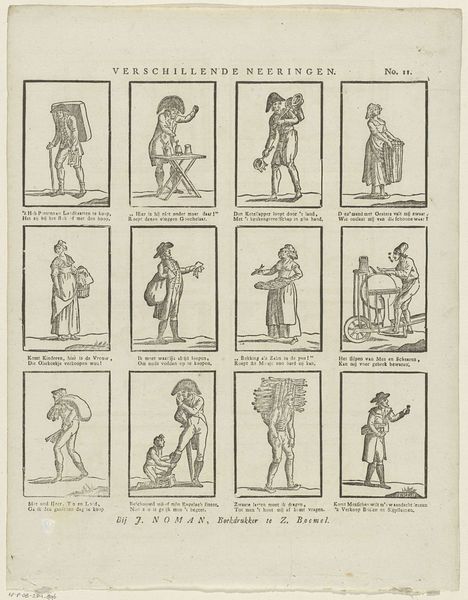
Dimensions: height 375 mm, width 310 mm
Copyright: Rijks Museum: Open Domain
Editor: So this is "Opwekking aan de lieve jeugd" from between 1848 and 1881. It's a print by Lutkie & Cranenburg held at the Rijksmuseum, and done with engraving techniques. It feels very moralizing and a little stiff, almost like a series of instructions for children. What strikes you most when you look at this work? Curator: The stiffness you mention actually speaks volumes. It recalls the *Stufenlehre*, or the stages of life, popular in didactic imagery from this era. Note how each small vignette presents an idealized moment of youthful behavior; playing, learning, praying. They become symbolic touchstones, wouldn't you agree, meant to cultivate certain values in its young viewers? Editor: That makes sense, the repetition almost drills the messages in. The symbolism of childhood innocence seems so specific. How does that connect to Dutch culture at the time? Curator: Precisely! Consider the historical context: the Netherlands during this period saw rising social awareness and moral reforms. These images function almost like miniature secular stained-glass windows, reinforcing community ideals within the domestic space. What connections do you see between the illustrations and their textual captions? Editor: It feels like a feedback loop. The pictures illustrate the poem's message, and the poem reinforces the image. Like they wanted to be really sure you got the point. Curator: Exactly. Now think, what happens when children encounter these today? Do these idealized versions of "good behavior" still resonate, or do they strike us as quaint historical artifacts, prompting different interpretations? Editor: That's a fascinating point. We project so much onto childhood, both then and now. It’s less about instruction now, more about historical perception. Thanks, I'll be looking at images from that time very differently now! Curator: A great pleasure. The interplay between symbol and culture always offers new avenues of inquiry.
Comments
No comments
Be the first to comment and join the conversation on the ultimate creative platform.

